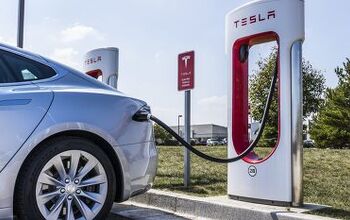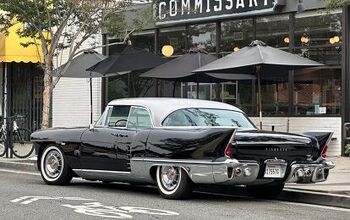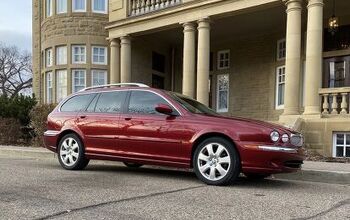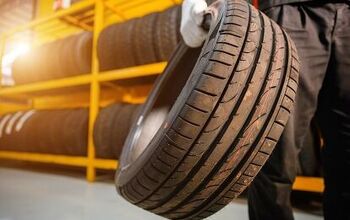Auto Loan Delinquencies Reach Record Levels

Delinquencies on automotive loans have surpassed the recession-era highs witnessed in 2009, according to an assessment released by S&P Global Mobility on Monday. Fortunately the wealthy will be largely unaffected by this trend, as the issue is isolated primarily to subprime borrowers. For some strange reason, people with more money are having less trouble paying their bills on time.
Based on the report, vehicle loans more than 60 days past due settled around 1.69 percent over the first three months of 2023. Automotive News covered the release, noting that the recession-era high for both 2009 and 2010 was just 1.46 percent.
S&P Global suggested that the increased delinquency rate could be attributed to inflation and high-interest rates. But that’s just fancy talk for poor people getting kicked in the rear end, not that they’re the only group feeling the pinch. Thanks to unfettered government spending, your dollar doesn’t go as far as it used to, and financial institutions are attempting to curb the trend by shifting to higher interest rates — which just makes things cost more money over time.
From Automotive News:
"The interest rate rise is squeezing the monthly budget for the average American consumer," Jill Louden, product management associate director for S&P Global Mobility, said in a statement. "Consumers set aside money monthly for housing, vehicles, and insurance, but may not pay other obligations with the same frequency, such as medical bills and credit cards. People need their vehicles to get to work to make money and pay their obligations."
The pandemic saw many lenders retreat from the subprime tier, which made up just 12.3 percent of account volume in the first quarter of 2021 and 12.9 percent in the first quarter of 2022, before recovering to 14.2 percent for the first three months of this year. Subprime volumes hovered around 15 percent before the pandemic.
According to TransUnion/S&P Global Mobility AutoCreditInsights, the high delinquency rate has encouraged captive finance companies, banks, credit unions and independent lenders to tighten underwriting standards. Combined with high interest rates and lower used-car inventories, this has led to a decrease in loan originations. There were 15.3 percent fewer originations in the fourth quarter of 2022 than in the same quarter of 2019, according to S&P Global Mobility.
With income inequality and wage stagnation having grown steadily since the late 1970s, along with vehicle pricing achieving new records in recent years, none of the above should be surprising. But the national response to the pandemic effectively shifted things into overdrive and guaranteed a wonky economy.
Loans from the new-vehicle segment are reportedly doing better overall. But that’s not much of a comfort when sales are still depressingly low. Industry estimates vary and averaged out to there being around 13.8 million new vehicles being sold last year in the United States. That’s an annual decline of nearly 10 percent against 2021 ( which was another bad year) and the lowest seen since the country was exciting the Great Recession in 2011.
No matter how you look at it, auto loans are becoming a massive headache for consumers. Americans have taken on significantly more debt to purchase vehicles in recent years. Data from the Federal Reserve estimates that the average automotive loan is up 41 percent since 2019, accounting for an increase of roughly $24,000.
That's massive and predominantly pertains to younger drivers. An estimated one in five members of Generation Z have claimed that their car payment accounts for over 20 percent of their income. Millennials have it almost as bad and the two groups accounted for a whopping $20 billion in automotive debt falling 90-plus days behind through 2022.
[Image: Pathdoc/Shutterstock]
Become a TTAC insider. Get the latest news, features, TTAC takes, and everything else that gets to the truth about cars first by subscribing to our newsletter.

A staunch consumer advocate tracking industry trends and regulation. Before joining TTAC, Matt spent a decade working for marketing and research firms based in NYC. Clients included several of the world’s largest automakers, global tire brands, and aftermarket part suppliers. Dissatisfied with the corporate world and resentful of having to wear suits everyday, he pivoted to writing about cars. Since then, that man has become an ardent supporter of the right-to-repair movement, been interviewed on the auto industry by national radio broadcasts, driven more rental cars than anyone ever should, participated in amateur rallying events, and received the requisite minimum training as sanctioned by the SCCA. Handy with a wrench, Matt grew up surrounded by Detroit auto workers and managed to get a pizza delivery job before he was legally eligible. He later found himself driving box trucks through Manhattan, guaranteeing future sympathy for actual truckers. He continues to conduct research pertaining to the automotive sector as an independent contractor and has since moved back to his native Michigan, closer to where the cars are born. A contrarian, Matt claims to prefer understeer — stating that front and all-wheel drive vehicles cater best to his driving style.
More by Matt Posky
Latest Car Reviews
Read moreLatest Product Reviews
Read moreRecent Comments
- SCE to AUX I hope they're buying good lawyers, too.
- SCE to AUX Nothing to see here. Gas prices 2021-23 were the same as they were in 2007-2008, adjusted for inflation. The R's were in charge then.https://www.randomuseless.info/gasprice/gasprice.html
- VoGhost Just reminding us all that we have to tolerate dealers (many of whom are billionaires) in the US if we want new legacy ICE vehicles because the dealers pay for the campaigns of local politicians, with our money.
- 1995 SC I'm still trying to get past the fact that the Red Bull guy is married to a Spice Girl.
- Ravenuer Not into F1. Started watching NASCAR back when they raced actual cars. (yeah I'm that old). Not any more. They aren't "stock cars" now. Not even close. Even drag races don't interest me anymore. Races are over in 3 seconds.


































Comments
Join the conversation
Used to be that after a 20% down payment to preserve principle, one’s MORTGAGE PAYMENT should amount to no more than 20% of gross income.
Things go better with Debt™